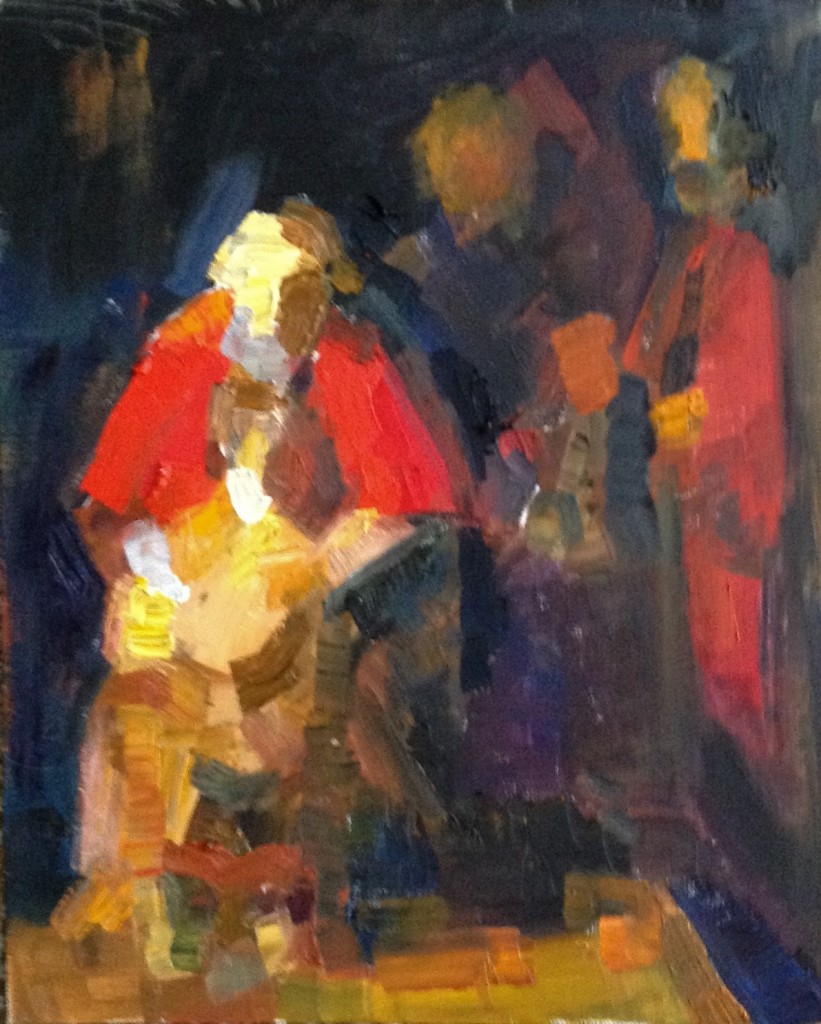
January 13th is the “old” New Year’s Eve in the Russian Orthodox calendar.
In my childhood and youth, the existence of this “Old New Year” (quite apart from the curiously oxymoronic way it sounded) offered a kind of (optional) delay to all the self-imposed deadlines associated with the turn of the year: if you haven’t managed to have something done till December 31st, it was as though you could allow yourself another fortnight (which momentarily seemed like an eternity). Ditto for any resolutions you didn’t quite manage to get going — you could always start on January 14th.
This year, though, was different. To begin with, we actually managed to “miss” the turn of the year, the midnight — for the first time in our life, it seemed remarkably unimportant. And anyway, when we finally get to the next year here in California, almost everybody else is already there… so what’s the point? And there were no self-imposed deadlines, and no resolutions — thus nothing to delay till January 13th. And so I have missed this one, too — and only remembered it today, when I started to edit this journal entry.
Interestingly, though, I did begin this year something I had been wanting to do (and procrastinating about) for a rather long time: these regular Studio Journal entries. These are intended both as an additional incentive to journal regularly in the evening, to look back at the day — and as a way to train myself to be more “raw”, more open, more direct and less refined in what I write in the public domain.
And so I somehow fell into this rhythm of writing: journaling for myself only every night, and then reading it, and editing, very informally, to post in this Studio Journal. And even if I did not feel like journaling by the end of this long and intensive workday, January 13th, I also felt already attached, almost addicted, to this new practice, this new routine. Pausing, and looking back at the day, and at my own self in the expanse of this day. The expanse of the day — this is the phrase that’s been playing on my mind all through the first half of the day.
That’s because the new approach to living I am trying to put into practice has brought me back to this childlike perception of time: it flies by imperceptibly, but its finite intervals — the upcoming and past weeks, and months, and days — seem long, expansive, almost infinite. It now seems to me that the real New Year’s Eve was ages ago — so much has somehow eased itself into this fortnight… Over the last years, I had grown accustomed to the opposite perception of time — when it feels like it drags every day, but years, and months, and weeks rush by as though in a flash of moment; and some events of the (already) distant past seem like they happened yesterday. This change of perception feels right — as though a kind of homecoming. And I suspect this daily journaling routine has some part in this change.
But the point of this journal is to keep track of my life, and of my studio practice, and of the work on the “Sonnets in Colour” series. Nothing much happened to the sonnets series this day, because it just happened to be wholly dedicated to work on my “Learning to Learn from Masters” course, it second module. It took somewhat longer than I expected, but partly because it was not devoid of painting.
Some time ago, at the spur of a moment, I “joined” my own program with the idea of studying Rembrandt’s masterpiece, “The return of the prodigal son”. The idea stroke me as one of utter madness and absurdity even at the time — comparable in madness, perhaps, with the very idea of painting Shakespeare’s sonnets. But I followed it nonetheless. Partly because of this new way of living I am trying to adopt, a life without overthinking and over planning, just acting whenever I feel like the impulse to act comes from some sort of inner depth. But also because I am so desperately afraid of being a coward that if something seems scary, I jump to do it — just so as not to appear cowardly to my own self. And then, of course, I wanted to attempt the painting so challenging to myself that would match the challenges set for themselves by other participants of my program.
What this study has in common with the sonnet series is not just the utter madness of the idea, and not that they both fall under the category of “painting”, but also the need to reflect on the process, to witness it as though from the outside. For me, this an opportunity to undergo the process of “painting study” again, more mindfully, more consciously than ever before — noticing what I am doing, understanding it, putting it into (hopefully) comprehensible words, making the experience shareable.
The connection with Rembrandt I have experienced today was pure joy — as much of a joy as I have ever had in this mysterious process of communing with the masters of painting. Not that I don’t know that it tends to happen — but somehow, it surprises me with this joy every single time. And this is only the beginning…